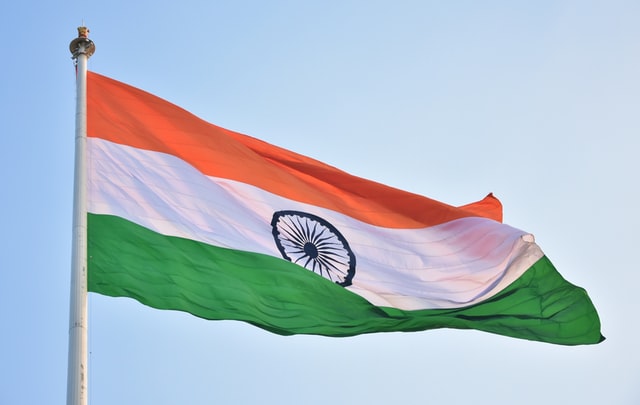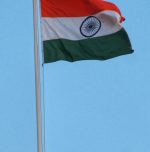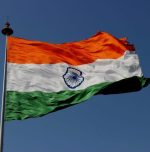Origin, Evolution and Significance of Indian National Flag

Indians call their national flag ‘Tiranga flag’ with love. Now the eve of Independence Day is ahead, it is relevant to know the facts about the Indian flag. Various flags were designed since the freedom movement before independence and the present flag that came into use.
The first Indian flag came into force in 1904. It was made by Sister Nivedita who was an Irish disciple of Swami Vivekananda using two colours red and yellow. The red colour represents the freedom struggle and yellow signifies victory. The flag had ‘Bonde Matoram’ in Benaglai on it. The flag also had figures of diamond and lotus which are symbols of strength and purity.
In 1906, another flag was designed which was a tricolour flag with blue, yellow and red stripes. The top strip of the flag, blue contained eight stars with slightly different shapes, and the bottom of the strip red contained the sun on one end, and the star and crescent moon on the other end. The middle yellow strip contained the words ‘Vande Mataram’ in the Devnagiri script.
In the same year, i.e. in 1906 Calcutta flag or Lotus flag was designed with the same pattern, but the top strip was green colour instead of blue. It had eight opened lotuses and the bottom red strip contained only the sun and crescent moon, there was no star on it. The flag was believed to be designed by Sachindra Prasad Bose and Sukumar Mitra to protest the partition of Bengal.
In 1916, Pingali Venkayya who was the designer of the current Indian national flag consulted Gandhiji who advised him to incorporate a Charkha in it. Venkayya made a flag out of handspun khadi with two colours red and green and a Charkha, and sought the approval of Gandhiji. But Gandhiji did not approve it, saying that the red represents Hindus and green signifies Muslims, but the remaining religions in India were not given proper significance.
In 1917, Bal Ganga Dhar Tilak adopted a new flag on the occasion of the Home Rule Movement with five red and four green horizontal stripes. It had the union jack at the top and seven stars on it that represented the ‘Saptarishi’ Constellation. It also had a crescent moon and a star at the top fly end.
In 1921, a new tricolour flag was designed with white on the top, then green and red on the bottom having Charkha on it. The red represents Hindus and Sikhs, and the green signifies Muslim as said earlier. The white colour in the flag represents the minority communities in India. This flag was widely used in the freedom struggle as a national symbol.
In 1931, Pingali Venkayya designed another tricolour flag considering the feelings of all Indians with saffron on the top, white in the middle and green on the bottom. Charkha was incorporated into the middle white band. This was approved by the Congress Committee and became the official flag.
The present Indian tricolour national flag was designed by Pingali Venkayya with saffron, white and green along with Ashoka Chakra on the middle white band. It was adopted by the Constituent Assembly headed by Dr Rajendra Prasad on 22 July 1947 and became the Indian national flag.
Significance of Indian National Flag: The saffron in the Indian national flag represents fire and purity. White signifies the qualities of all colours as it is a mixture of seven various colours. It also signifies peace as Indians adopted a nonviolence policy for their freedom. The green colour resembles life, fertility and protection. The Ashoka chakra is a symbol for ‘Satya’ (truth) and ‘Dharma’ (Duty).
Some consider that the orange colour represents Goddess Lakshmi, the Goddess of money who represents inner happiness, and the Goddess Parvathi, the Goddess of power as orange is a mixture of red and yellow colours.
Red symbolizes power and courage, and yellow symbolizes mental development and inner happiness. White is symbolic of Goddess Saraswathi, the Goddess of knowledge who wears a white sari and sits on the Swan or Lotus, which is white. The green colour signifies the creation of God as most of the plants are green. The blue colour of the Ashoka chakra represents oceans and sky.
Some consider the deities such as Lord Rama and Krishna are blue. The 24 spokes in Ashoka chakra are believed to symbolize the 24 hours in a day. It is also believed that Sattva and Rajas, the two good qualities of ‘Triguna’ are represented in the Indian national flag. ‘Trigunas’ are Sattva, Rajas and Tamas represented by white, red and black.
Photo by Srikanth D on Unsplash(Free for Commercial Use)
Image Reference: https://unsplash.com/photos/ReUUh61x1qQ









Leave a Reply